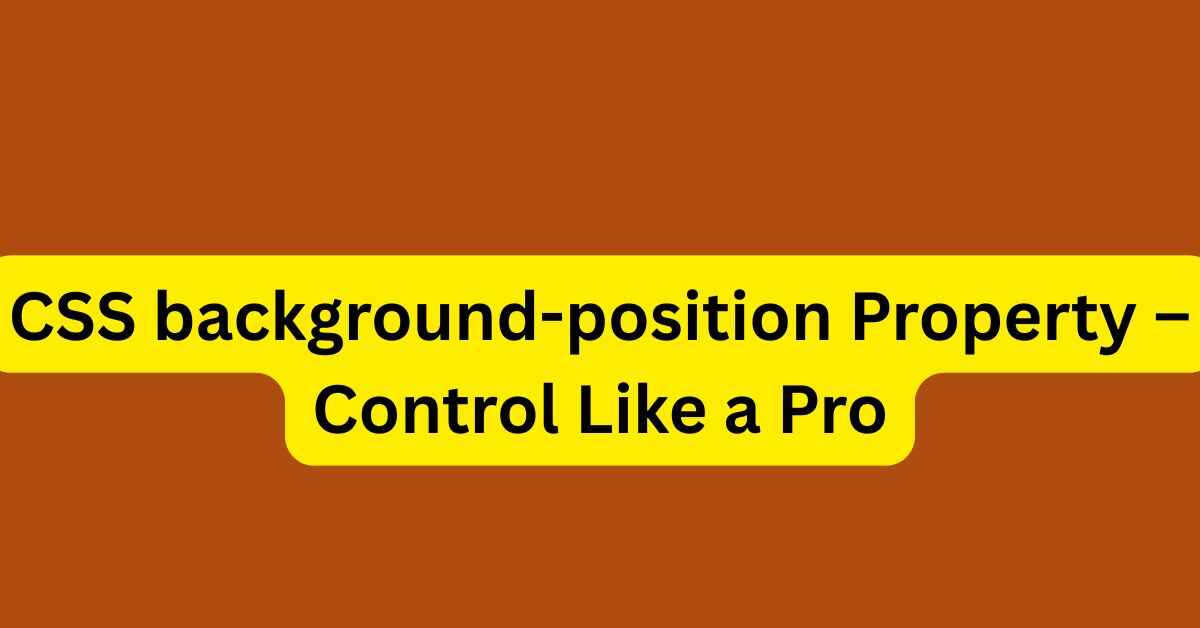|
Getting your Trinity Audio player ready... |
Originally published on Makemychance.com
If you’re working with background images in CSS, then you’ve probably used background-image, background-size, and maybe background-repeat. But one underrated and super useful property is background-position.
This single property gives you full control over where your background image appears inside an element — which is crucial for responsive design, hero sections, custom banners, and more.
Let’s break it down, the practical way.
🔍 What is background-position?
The background-position property defines the starting position of a background image inside its container.
🔧 Syntax
background-position: <x> <y>;
<x>= horizontal position<y>= vertical position
🧪 Example
.hero {
background-image: url('banner.jpg');
background-position: center center;
background-size: cover;
height: 400px;
}
Here, the background image is centered both horizontally and vertically.
🎯 Common Values You’ll Actually Use
| Value | Meaning |
|---|---|
left top | Top-left corner (default) |
center center | Center of the container |
right bottom | Bottom-right corner |
50% 50% | Same as center center |
10px 20px | 10px from left, 20px from top |
right 20px | 20px from right edge |
top 50% | Center vertically, align to top horizontally |
📸 Visual Example
.card {
background: url('photo.jpg') no-repeat;
background-position: right bottom;
background-size: 100px;
width: 300px;
height: 200px;
}
This puts the image in the bottom-right corner of the .card.
💡 Use With background-size
Using background-position works best when combined with background-size, like so:
.section {
background-image: url('bg.jpg');
background-size: cover;
background-position: center;
}
This setup is perfect for full-width banners or responsive sections.
🔁 Shorthand Combo
Instead of writing multiple lines:
background-image: url('image.jpg');
background-size: cover;
background-position: center;
You can use the shorthand:
background: url('image.jpg') center / cover no-repeat;
Saves time and keeps your CSS cleaner.
📱 Responsive Design Tip
Sometimes when using cover, the image may crop strangely. That’s where background-position saves the day.
Try adjusting like this:
background-position: center top;
This ensures the top of the image always stays visible, which is great for faces or text in images.
🚫 Common Mistake
Using values like:
background-position: center;
This only sets the horizontal axis. Always use both x y for clarity unless you’re sure.
/* Better */
background-position: center center;
🧠 Final Thoughts
The background-position property is simple but super powerful. Whether you’re aligning an image in a small card or setting a large full-page background — this property gives you full control over how and where your image is displayed.
If you’re already using background-size: cover or contain, just pair it with background-position to make your layout look perfect.
Need a ready-made hero section template using this? I’ve got one.
Arsalan Malik is a passionate Software Engineer and the Founder of Makemychance.com. A proud CDAC-qualified developer, Arsalan specializes in full-stack web development, with expertise in technologies like Node.js, PHP, WordPress, React, and modern CSS frameworks.
He actively shares his knowledge and insights with the developer community on platforms like Dev.to and engages with professionals worldwide through LinkedIn.
Arsalan believes in building real-world projects that not only solve problems but also educate and empower users. His mission is to make technology simple, accessible, and impactful for everyone.



